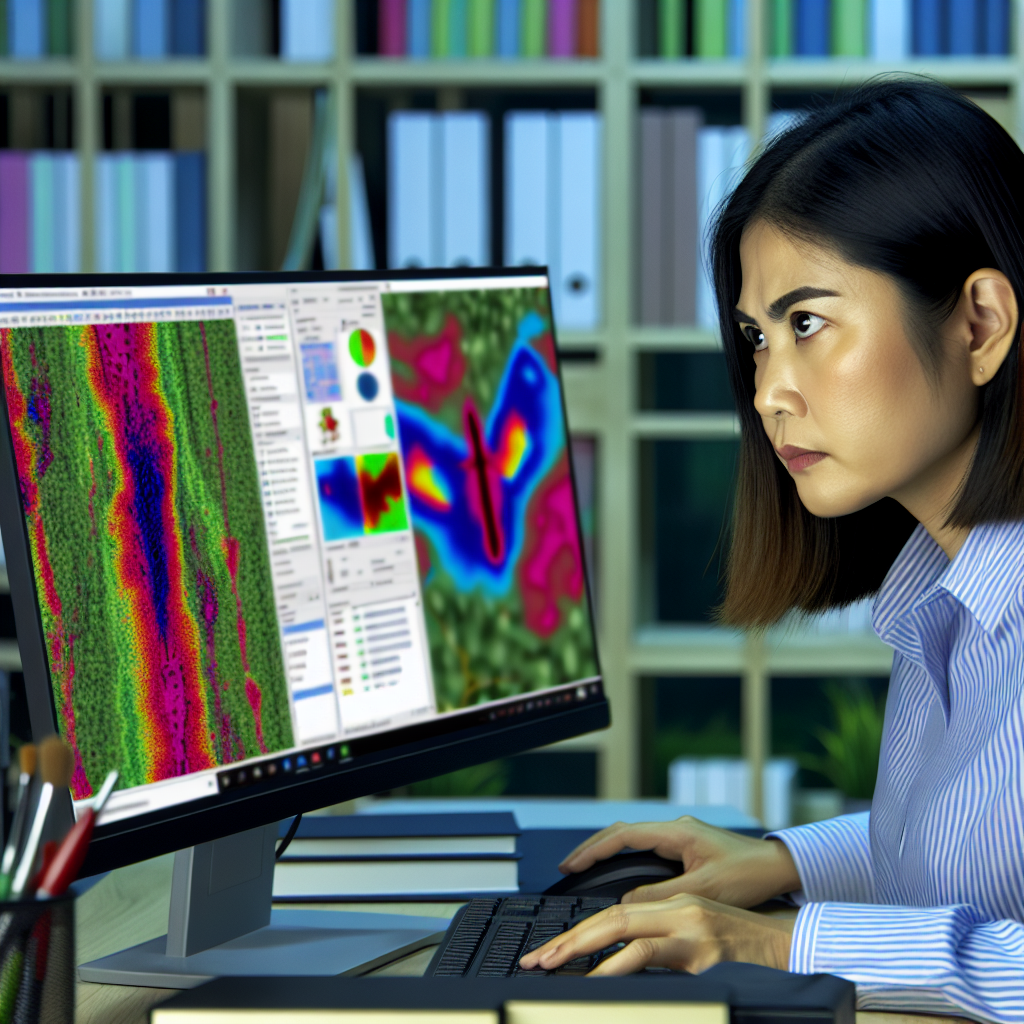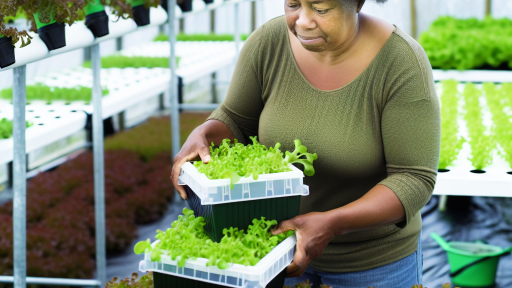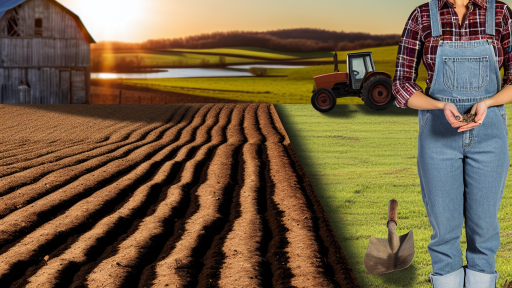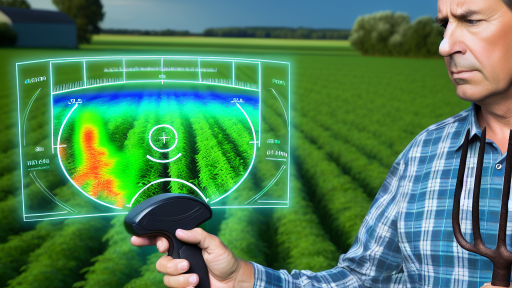Introduction to the Role of Technology in Agriculture
Technology plays a pivotal role in modern agriculture.
It enhances productivity and sustainability across farming practices.
Farmers increasingly rely on innovative solutions to solve agricultural challenges.
For instance, precision agriculture uses data analytics to optimize crop management.
This approach leads to more efficient use of resources like water and fertilizers.
Moreover, technology improves pest and disease prediction methods.
Early detection allows farmers to address issues before they escalate.
Consequently, they can reduce crop losses and enhance yields.
Additionally, advanced forecasting tools utilize real-time data for insights.
These tools can integrate weather patterns with pest lifecycle information.
This fusion of data enables proactive management decisions.
Furthermore, technology supports sustainable practices in agriculture.
Farmers can monitor soil health, helping to maintain ecological balance.
The integration of technology fosters innovation in farming.
This not only sustains agricultural productivity but also addresses environmental concerns.
Transform Your Agribusiness
Unlock your farm's potential with expert advice tailored to your needs. Get actionable steps that drive real results.
Get StartedTechnology is essential for the future of agriculture.
Overview of Pest and Disease Forecasting Methods
Introduction to Forecasting
Pest and disease forecasting is essential for modern agriculture.
Farmers can make informed decisions using accurate predictions.
This approach helps mitigate crop losses and improves yields.
Traditional Forecasting Methods
Traditionally, farmers relied on historical data.
They often observed patterns in climatic conditions.
Manual scouting was another common method.
This process involves physically checking fields for signs of pests or diseases.
However, these methods can be time-consuming and error-prone.
Advancements in Technology
Today, various technologies enhance pest and disease forecasting.
Remote sensing technology is one significant advancement.
This technology utilizes satellites or drones to monitor crop health.
Moreover, Geographic Information Systems (GIS) allow farmers to analyze spatial data.
Data Analytics and Prediction Models
Data analytics plays a crucial role in modern forecasting.
Machine learning models can predict outbreaks based on multiple factors.
These factors include weather patterns, soil moisture, and pest life cycles.
Additionally, predictive models enable real-time monitoring and alerts.
Integration with Mobile Applications
Mobile applications further streamline pest and disease management.
Farmers can access forecasts, alerts, and best practices on the go.
These applications also facilitate reporting pest sightings.
This data contributes to collective forecasting efforts across regions.
Community-Based Approaches
Collaboration enhances the effectiveness of forecasting methods.
Farmers can share experiences and data through online platforms.
This approach fosters a sense of community and collective knowledge.
Showcase Your Farming Business
Publish your professional farming services profile on our blog for a one-time fee of $200 and reach a dedicated audience of farmers and agribusiness owners.
Publish Your ProfileConsequently, it leads to more accurate forecasting for everyone involved.
The Significance of Data Collection in Forecasting
Foundation of Accurate Predictions
Data collection forms the backbone of pest and disease forecasting.
Accurate data enhances the reliability of predictions.
It helps experts recognize patterns and trends over time.
Additionally, it allows for the identification of critical risk factors.
Real-Time Monitoring and Alerts
Modern technology enables real-time data monitoring.
This capability assists in detecting pest outbreaks swiftly.
With immediate alerts, farmers can respond promptly.
Consequently, they minimize potential crop damage effectively.
Integration of Diverse Data Sources
Effective forecasting relies on integrating multiple data sources.
Researchers can combine climatic, biological, and geographical data.
This extensive approach provides a holistic view of potential threats.
Moreover, it helps in customizing predictions for specific regions.
Enhancing Decision-Making
Data-driven insights lead to informed decision-making.
Farmers can prioritize their resources more efficiently.
For instance, targeted pest control measures can be implemented.
This strategic focus reduces costs while maximizing productivity.
Supporting Sustainable Practices
Collecting data promotes sustainable agricultural practices.
By understanding pest behavior, farmers can adopt eco-friendly approaches.
For example, they might utilize natural predators instead of chemicals.
This shift minimizes environmental impact and promotes biodiversity.
Explore Further: Enhancing Soil Fertility with Cover Crops
Technological Tools for Real-Time Monitoring of Pests and Diseases
The Importance of Real-Time Monitoring
Real-time monitoring helps farmers make informed decisions.
It enables quick responses to emerging pest and disease threats.
Furthermore, it minimizes crop damage and loss.
Remote Sensing Technology
Remote sensing uses satellite and drone technology.
It collects data about crop health and pest populations.
This technology allows for large-scale analysis of agricultural fields.
As a result, farmers can identify problems early.
Satellite Imagery
Satellite imagery provides comprehensive coverage of farmlands.
Farmers can monitor changes in vegetation and moisture levels.
This information aids in assessing pest risks.
Drones
Drones are increasingly used for targeted monitoring.
They capture high-resolution images that reveal pest infestations.
This targeted approach improves management efficiency.
Mobile Applications
Mobile applications enhance on-the-go monitoring capabilities for farmers.
They provide access to real-time data via smartphones.
Farmers can report pest sightings and receive alerts.
This communication fosters community awareness and action.
IoT Devices and Sensors
The Internet of Things (IoT) connects various devices in the field.
Showcase Your Farming Business
Publish your professional farming services profile on our blog for a one-time fee of $200 and reach a dedicated audience of farmers and agribusiness owners.
Publish Your ProfileSensors monitor soil moisture, temperature, and pest activity.
These devices can send alerts directly to farmers.
Consequently, growers can address issues immediately.
Soil Moisture Sensors
Soil moisture sensors provide data necessary for pest management.
They inform farmers when to irrigate, preventing stress.
This stress can attract pests and pathogens.
Pest Traps with Real-Time Analytics
Smart traps leverage technology to gather pest data.
They transmit real-time information to farmers.
This data allows for precise pest control measures.
Data Analytics and AI
Data analytics and artificial intelligence enhance pest management strategies.
These technologies analyze vast amounts of data swiftly.
They identify patterns that inform predictive modeling.
As a result, farmers can anticipate pest outbreaks.
Predictive Modeling
Predictive modeling uses historical data to forecast threats.
It enables better preparation during vulnerable periods.
This proactive approach increases crop resilience.
Enhancing Productivity in Agriculture
Utilizing technology for pest and disease forecasting is crucial.
Real-time monitoring offers significant advantages for farmers.
With the proper tools, growers can enhance productivity sustainably.
Learn More: Organic Fertilizers: Boosting Crop Growth Naturally
Integration of Remote Sensing Technologies in Agriculture
Introduction to Remote Sensing
Remote sensing transforms agricultural practices through data collection.
This technology captures vital information about crops and environmental conditions.
Farmers leverage satellite imagery and aerial photography to monitor their fields.
Consequently, they can make informed decisions regarding pest and disease management.
Types of Remote Sensing Technologies
Various remote sensing technologies aid in agricultural applications.
Satellite imagery provides widespread insights into crop health.
It allows for monitoring over large areas efficiently.
Furthermore, drones equipped with cameras offer localized data collection.
This technology can capture detailed images of specific areas of concern.
Benefits of Remote Sensing in Agriculture
Remote sensing offers numerous benefits to modern agriculture.
- It improves crop monitoring and management practices.
- Farmers can detect early signs of pest infestations.
- It enhances precision agriculture through data-driven insights.
- Remote sensing minimizes resource wastage by ensuring targeted interventions.
Ultimately, these advantages lead to increased crop yields and reduced losses.
Challenges in Implementing Remote Sensing
Despite its advantages, remote sensing has notable challenges.
The initial costs of acquiring technology can be high for small farmers.
Additionally, data interpretation often requires specialized skills.
Weather conditions can also affect the accuracy of remote sensing data.
Despite these challenges, many farmers continue to adopt this technology.
Future Trends in Remote Sensing
The future of remote sensing in agriculture looks promising.
Emerging technologies will enhance data accuracy and affordability.
Integration with artificial intelligence will revolutionize data analysis.
Farmers will gain access to predictive analytics for better decision-making.
Showcase Your Farming Business
Publish your professional farming services profile on our blog for a one-time fee of $200 and reach a dedicated audience of farmers and agribusiness owners.
Publish Your ProfileFurthermore, the collaboration among tech companies and agricultural sectors will expand adoption.
You Might Also Like: Comprehensive Guide to Mulching in Crop Cultivation

Machine Learning and AI Applications in Pest and Disease Prediction
Overview of Machine Learning in Agriculture
Machine learning transforms agricultural practices today.
This technology can analyze vast amounts of data.
It identifies patterns that humans may overlook.
Farmers can use these insights for better decision-making.
Benefits of AI in Pest Forecasting
AI enhances the accuracy of pest predictions.
It utilizes historical data for informed forecasting.
Moreover, AI can adapt to changing environmental conditions.
This responsiveness is crucial for effective pest management.
Data Sources for Machine Learning Models
Diverse data sources strengthen machine learning models.
Satellite imagery provides insights into crop health.
Weather data helps predict pest outbreaks.
Public databases contain valuable information on pest behaviors.
Utilizing Remote Sensing Technologies
Remote sensing captures data on crops from above.
This technology provides real-time monitoring capabilities.
Farmers can promptly address pest threats using it.
Analyzing Historical Data
Analyzing historical pest data reveals trends over time.
This analysis aids in developing predictive models.
Such models help anticipate future pest events effectively.
Case Studies of Successful Implementations
Real-world applications showcase the power of these technologies.
A case study by GreenField Farms highlights AI’s impact on pest control.
They reported a 30% decrease in crop loss by implementing AI.
Similarly, AgriTech Solutions utilized machine learning for disease forecasting.
They achieved significant improvements in crop yields.
Challenges in Implementing AI and Machine Learning
While beneficial, integrating AI poses challenges.
Data quality and consistency play crucial roles in effectiveness.
Additionally, farmers may require training to adopt these technologies.
Addressing these barriers is essential for widespread adoption.
Future Trends in Pest and Disease Management
The future of pest management lies in advanced technologies.
Emerging AI algorithms promise even more precision in predictions.
Additionally, integrating blockchain can ensure data security.
Such innovations will further enhance farming sustainability.
Gain More Insights: Innovative Mulching Approaches for Large-Scale Farms
Challenges and Limitations in Utilizing Technology for Forecasting
Data Accuracy Issues
Accurate data is essential for effective forecasting.
However, data collection methods can introduce errors.
For instance, sensor calibrations may vary across devices.
These discrepancies can lead to inaccurate predictions.
Technology Accessibility
Access to advanced technology varies by region.
Farmers in remote areas often lack the necessary tools.
Showcase Your Farming Business
Publish your professional farming services profile on our blog for a one-time fee of $200 and reach a dedicated audience of farmers and agribusiness owners.
Publish Your ProfileThis digital divide hinders widespread utilization.
Consequently, many small farms miss out on benefits.
Training and Knowledge Gaps
A lack of training can impede technology adoption.
Farmers may struggle to utilize complex forecasting tools.
Moreover, some individuals may resist changing traditional practices.
Education programs are crucial to bridge this gap.
Integration with Existing Systems
Integrating new technology with existing systems poses challenges.
Different platforms may not communicate effectively.
This can create data silos that hinder analysis.
Seamless integration is essential for successful implementation.
Cost Considerations
The cost of technology can be prohibitive for some farmers.
Investing in advanced forecasting tools may strain budgets.
Therefore, financial support and incentives become necessary.
Ultimately, affordability remains a significant barrier.
Environmental Variability
Environmental factors greatly influence pest and disease outbreaks.
Unpredictable weather patterns complicate forecasting accuracy.
Climate change further exacerbates these uncertainties.
As a result, technology must adapt to evolving conditions.
Data Privacy and Ethics
Data collection raises privacy concerns for farmers.
Individuals may distrust how their information is used.
Ethical considerations come into play with data sharing.
Building trust is vital for the successful use of technology.
Future Trends in Technological Advancements for Agricultural Pest Management
Integration of Artificial Intelligence
Artificial intelligence significantly enhances pest and disease forecasting.
This technology analyzes vast data sets efficiently.
It identifies patterns and predicts outbreaks with high accuracy.
Farmers can make timely decisions based on AI recommendations.
Consequently, they reduce pesticide use, benefiting the environment.
Utilization of Drones and Remote Sensing
Drones are revolutionizing pest management practices.
They provide aerial imagery of crops to monitor health continuously.
This allows for early detection of pest infestations and diseases.
Additionally, drones can target pesticide applications precisely.
This minimizes chemical use and reduces costs for farmers.
Advancements in Mobile Applications
Mobile apps are becoming essential tools for farmers.
They offer real-time data on pest forecasts and outbreaks.
Farmers can receive alerts on their smartphones and tablets.
This instant communication promotes quick actions against pests.
Moreover, mobile apps often include educational resources for farmers.
The Role of Big Data Analytics
Big data analytics plays a crucial role in effective pest management.
This technology collects and processes data from various sources.
By analyzing trends, farmers can anticipate pest movements.
Showcase Your Farming Business
Publish your professional farming services profile on our blog for a one-time fee of $200 and reach a dedicated audience of farmers and agribusiness owners.
Publish Your ProfileFurthermore, predictive modeling allows for better strategic planning.
This proactive approach enhances crop yields and sustainability.
Development of Biopesticides and Precision Agriculture
The emergence of biopesticides offers sustainable alternatives to chemicals.
These products are derived from natural materials, reducing environmental harm.
Accompanied by precision agriculture techniques, biopesticides can target specific pests.
This strategy minimizes the impact on beneficial insects and the ecosystem.
Farmers adopting these practices witness healthier crop production.
Additional Resources
Artificial intelligence on the agro-industry in the United States of …
Integrative approaches in modern agriculture: IoT, ML and AI for …




